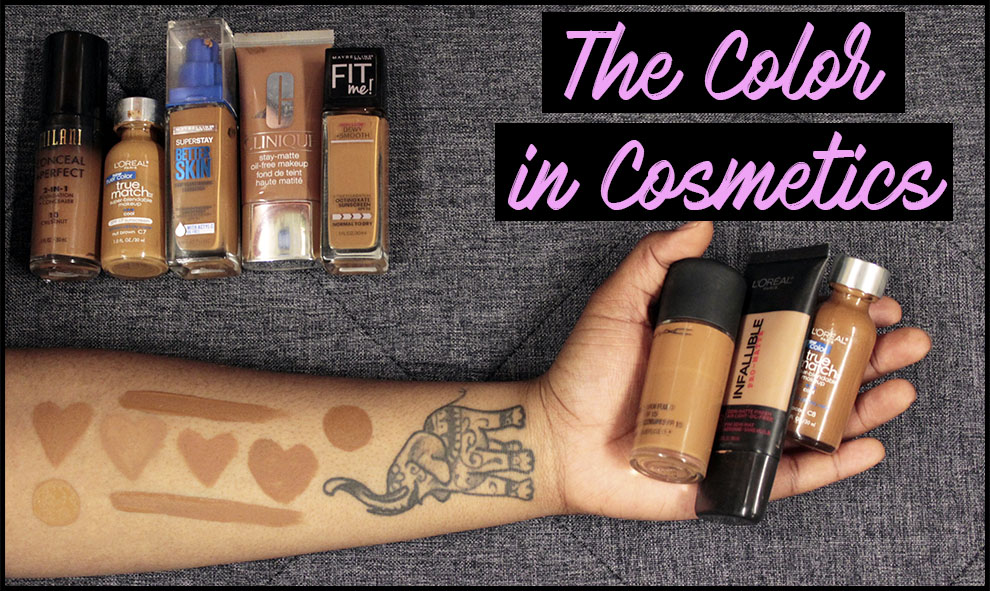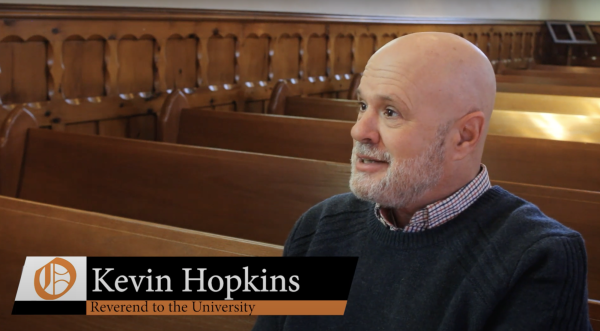The color in cosmetics: fifty shades of brown
Image by Bailey Conklin.
The African American community takes up nearly 15 percent of the U.S. population and according to the U.S Census Bureau, by the mid 2040s, the majority of the population will be minorities. The makeup industry, however, struggles to produce enough products that cater to skin tones of women of color.
According to Nielsen, African Americans will reach a buying power of $1.3 trillion this year. Black women spend an estimated $7.5 billion annually on beauty products, spending 80 percent more on cosmetics than other ethnicities.
“I spend at least $60 per month on makeup, maybe more,” sophomore Aradasia Walker said.
Black women often test, buy and rebuy products in order to find the perfect shade.
“Makeup is expensive, especially the high-end brands, so when you find a color that doesn’t match and you constantly have to go repurchase different shades, that money adds up,” junior Nia Madison said.
Foundation
Foundation is the most profitable segment of the cosmetic industry, according to Statista.com, amounting to $985 million in 2016, yet it’s the most difficult product for black women to find a match for.
“I have the hardest time finding foundation,” Walker said. “I have seven different foundations because none of them match me perfectly, so I have to mix them together.”
Madison deals with the ashy effect of foundation, which is a common issue for women of color.
“I have to mix foundations and try super hard to blend just to make sure it looks like my natural skin tone and not ghostface,” Madison said.
In an interview with Refinery29, Maya Brown, vice president of marketing for Black Opal, said that brands aren’t taking the concern of the black community into consideration when producing products.
“Brands are trying to come out with something that’s a brief introduction into the marketplace without really looking at the formulas and how they’re going to market, and making sure that the products are customized and tailored,” Brown said.
Partnership
Why are black-owned companies shying away from black female consumers?
“I think the main goal for these companies is money,” Madison said. “If you expand your target consumers, then there’s a better chance for the business to be more successful.”
Desiree Reid, vice president of Iman Cosmetics, told Refinery29 that the retailers must take responsibility for the distribution and availability of specific products.
“It’s not just a brand issue; it’s a partnership that has to be formed between retailers,” Reid said. “Location, communication, information, and having people that understand what she’s looking for and are able to guide her, are important.”
Places like Baldwin City, where the minority population is low-lack products designated for black skin and skin tone, leaving many black consumers to shop online for products.
“There is a concern with inventory in places where there is a low population of women of color,” Director of Diversity and Inclusion Teresa Clounch said. “If the product doesn’t move then it doesn’t make money, so many companies have more options online.”
Advertising through celebrities is also risky for companies because their portrayals have to be accurate and not generalized.
“When I was younger, Halle Berry was the only woman that I saw in beauty advertisements,” Clounch said. “Lupita Nyong’o is the only celebrity that I’ve seen lately that is really making a difference. It’s difficult because black women come in so many different shades, so it’s hard to represent us all.”
Inclusion
In the last few years, brands have been taking tiny steps to include black women in the cosmetic market.
“It’s not that these consumers were silent before, but companies didn’t have to listen,” Reid said. “You can no longer put a product out and leave out a segment of the market with such financial power.”
In the past, drugstore brands such as Neutrogena often lacked any shades dedicated to women of color, but Neutrogena partnered with actress Kerry Washington in 2016 to launch new shades such as Cocoa, Honey and Caramel.
L’Oreal also made an effort with the launch of its Women of Color, which includes more scientific methods in formulating the perfect shades for darker skin tones.
Among the high-end brands, Bobbi Brown recently added five darker shades to its Skin Foundation Stick, while Lancome added Kenyan-Mexican actress Lupita Nyong’o as a spokeswoman.
Black Owned
Fortunately, black-owned makeup businesses are increasing.
In 2014, model Tyra Banks released her own line of cosmetics, which as of now has nine shades in the Flawsome Face tinted moisturizer, beginning with Sugar Cookie, intended for fair to light skin tones with pink undertones and ending with Chocolate Fondue, intended for women with red undertones.
Singer Rihanna is also partnering with LVMH to launch a beauty line this fall. It will potentially expand the shade options for women of color.
During her speech at this year’s Big XII Conference on Black Student Government, Tam Hawkins, president and CEO of the Greater Austin Black Chamber of Commerce, stressed the importance of supporting black entrepreneurs and investing back into black businesses in order to strengthen black buying power.
Unfortunately, there seems to be a stigma placed on black-owned products. Typically, they are considered low-quality compared to products made by other races. This stigma is perpetuated by the black community.
In a blog post on SheKnows, one blogger wrote, “Unlike other races where they are prideful of their people no matter the socioeconomic status or difference in skin complexion, black people rather separate… no matter if it’s in the classroom or in the corporate world, there seems to be a hesitation in black people supporting one another.”
No black faces in advertisements?
In response to the lack of representation, Shea Moisture, whose products focused had primarily on African American hair, added makeup to its line in 2014. Sundial Brands is responsible for Shea Moisture and has an annual revenue of $200 million, largely stemming from African American consumers.
According to Ulta.com, the Weightless Shea Serum Foundation received mixed reviews with 72 percent of buyers claiming that they would recommend it to a friend.
Other brands such as Iman Cosmetics, which is a $25 million business, and Black Opal, are also black-owned makeup brands whose products cater to black women.
Nonetheless, issues with advertising have become prominent. Shea Moisture was criticized by the black community after using a white child in an advertisement as opposed to a child of color.
In response, one tweet read, “Can we have something of our own?”
Shea Moisture defended the post on Twitter and reassured its dedication to consumers of color.
“No ad. No agenda. As a certified minority-owned business, we are so proud of our heritage, our community and how far we’ve come,” Shea Moisture said. “With your support we’ve been able to bring diversity and variety to retail.”
Black Opal had similar issues after consumers noticed an unreasonable number of white women in the promotions on its Facebook page. Black Opal responded and claimed that specifically targeting black consumers was never their intention but their focus was rather on a broader audience.
The Power of Hashtags
The internet has allowed black women to join together and voice their concerns about misrepresentations within the media and other industries.
“We’ve used social media as a platform to express how we feel,” Madison said. “People don’t have to guess or assume anymore because we can say exactly what we want.”
Millennials have taken charge in pressing the melanin poppin and black-girl magic hashtags all over social media and bringing awareness to self-love among the black community.
“Hashtags are positive for black millennials because we’re embracing our heritage, it’s just in a modern-day way,” Madison said. “We’re not sad or dwelling on the past anymore. We’re brown, proud and poppin and we’re not ashamed.”
Reid emphasizes that black women and other women of color want a seat at the beauty table.
“They’re not categories; they’re customers that are looking for the same thing every woman’s looking for when she walks down that beauty aisle,” Reid said. “Whether it be a great red lipstick, a foundation, a mascara, she’s looking for products that meet her beauty needs, and her beauty needs are not that much different from women who are not of color.”







